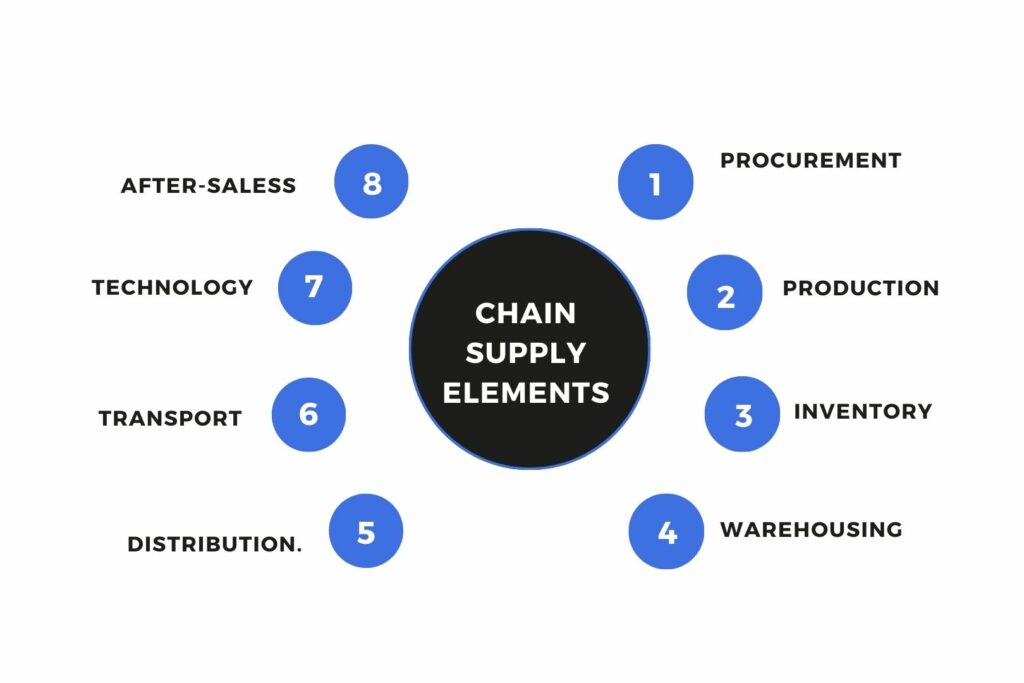The only way to minimize frustrating ‘out of stock’ notifications for your customers is effective manufacturing supply chain management.
The manufacturing supply chain is complex, handling everything from sourcing raw materials to B2B ecommerce sales and after-sales service. In recent years we have seen that the more distributed your supply chain network the harder it is to manage.
The solution is a shift from traditionally siloed operations to an integrated approach that provides better visibility at every step. From your B2B ecommerce portal to procurement and product design, seamless information sharing gives you the edge.
Digitally transform supply chain management for your manufacturing operations
With the right tools you can proactively respond to shortages, increased costs and logistics issues throughout your supply chain. When you have the right information at your fingertips you can review and negotiate your contracts with confidence.
Cloudfy’s business to business (B2B) ecommerce solution simplifies managing and sharing your stock levels and lead times. Data directly from your enterprise resource planning (ERP) system provides alerts when items are running low or
back in stock. Using cXML or an application programming interface (API) you can even directly update your suppliers’ and customers’ databases.
You can use Cloudfy’s powerful API for bespoke supply chain management requirements and can interface with third-party systems.
Table of Contents
Challenges in the manufacturing supply chain

Your raw materials and components might come from anywhere in the world. Even a small local disruption can have a major impact on your operations. Risks can arise from natural disasters, global politics, accidents, cybercrime attacks or the weather.
Production, fulfillment and customer satisfaction are all at risk if things go wrong. The solution is an integrated approach from B2B ecommerce sales to procurement.
A unified view of all the processes needed to create and sell your products allows you to take control. They include procurement, production, quality control, distribution and after-sales service. With so many elements, each with their own risks, there’s no room for disconnections, waste or inefficiencies.
Lacking visibility of the factors affecting your suppliers can result in significant disruption. Diversifying your supply chain, combined with real-time data collection through your enterprise (ERP) system dashboard, can minimize the risks. At the same time good communication allows early identification of potential disruptions.
To counteract economic and political uncertainties around the world many manufacturers are now bringing their supply chain closer to home. It’s one option to improve operational efficiency, reduce shipping costs and achieve faster order fulfillment.
Manufacturing profits are under pressure due to inflation, shortages of materials and skills and shifting economic priorities. In this environment increased prices for end users aren’t always viable. Alternatively, digital transformation throughout the manufacturing supply chain can reduce costs. You can improve margins through increased efficiency, minimized waste and alternative sourcing strategies.
Some disruptions remain inevitable; the difficulty is anticipating where they are most likely to arise and how to respond. Accurate forecasting can speed up recovery and minimize damage to customer relationships and reputation. Capturing useful data and turning it into actionable insights is a key requirement for effective supply chain management.
All business sectors are facing skills shortages. Manufacturers are ideally placed to take advantage of automation to improve efficiency and make the best use of their trained and qualified workforce.
Manufacturing supply chain elements

Effective coordination across the multiple elements in the manufacturing supply chain is essential.
Procurement
Researching, sourcing and buying raw materials and components is now a global concern. A fine balance is needed between high-quality materials, price, availability and sustainability to meet customer needs and maintain profitability.
Production
Creating viable products for sale is what manufacturing is all about. Every opportunity for improvement can make a difference to performance and profitability. Effective end to end processes and efficiency are key to success.
Inventory
Creating the right products at the right time is at the heart of manufacturing. Overstocking and understocking are both critical issues so effective management and control of inventory is essential.
Warehousing
The time your products spend in the warehouse isn’t productive for your business. You’ll want to know processes are accurate and reliable to keep your products moving on smoothly for shipment.
Distribution
Products must arrive where they’re needed at the right time and in good condition. A timely and traceable process is required whether you’re shipping to a distributor, a retail outlet or directly to consumers. Errors and delays affect customer satisfaction and can mean the loss of future sales.
Transport
From the production line to storage and onwards to customers your products are likely to move multiple times. Several different types of transport might be involved, each introducing possible errors. To manage costs, avoid mistakes and meet your sustainability commitments you’ll want to use the most efficient options available.
Technology
Complex manufacturing processes can’t operate effectively without technology, from product design to customer service. Optimizing your use of technology allows you to simplify your business, save money and scale your operations.
After-sales
A product sale is just one step in your customer’s life cycle. To build customer loyalty and increase their lifetime value, your after sales service must be outstanding. Accurate information about your customers’ buying histories helps you understand and anticipate their needs.
Tools to control your manufacturing supply chain
The complexity of your manufacturing supply chain affects your costs, efficiency, customer service, and the quality of your products. Effective risk management for all of these factors improves operational control and overall performance. Ultimately, customer satisfaction increases and you’ll gain a competitive advantage.
The complexity of your manufacturing supply chain affects your costs, efficiency, customer service, and the quality of your products. Effective risk management for all of these factors improves operational control and overall performance. Ultimately, customer satisfaction increases and you’ll gain a competitive advantage.
Supplier management
You rely on your suppliers but it’s a risk to have only one option available. Spreading your purchasing gives flexibility to minimize shortages but also adds complexity. Regularly researching and reviewing your preferred suppliers helps identify areas for improvement and better value for money. Fast and accurate reporting allows you to monitor and control spending and helps you negotiate the best contract prices.
Monitoring supply levels in near real-time is streamlined with a fully integrated warehouse management system. Ordering is simpler and faster and can be triggered when resources fall below specified levels. Your ERP system can collect and analyze data on supplier performance and pricing comparisons to improve the procurement process.
Production quality control
Careful production management drives quality. Along with energy the production process is probably your highest business cost. Material requirements planning (MRP) and automation optimize your output, minimize downtime and extend plant life.

Warehousing
Whether you manufacture to order or maintain a stock of finished products automation and accurate data collection improve forecasting accuracy. Automated picking and shipment preparation can speed up order processing.
A fully integrated warehouse management system using barcodes, picking robots and mobile scanners improves fulfillment accuracy and speed. Combined with shipping management tools and a transport management system you can optimize shipping routes and reduce costs. Using your B2B ecommerce portal your customers can access order tracking and automated status updates immediately when orders are dispatched.
Distribution and transport
Many manufacturing companies find it more cost effective to outsource distribution to a third-party logistics (3PL) provider. Good communication is essential to avoid errors and conflicts.
If you have in-house distribution you can use modern technology to simplify your supply chain logistics. This can use near real time data for shipment tracking and inventory levels via your ERP system. Customer specific information shared via your B2B ecommerce portal can reduce the order status enquiries your sales and customer service teams receive.
Retailer engagement
Retailers play a key role in the manufacturing supply chain. Effective collaboration provides valuable information to improve demand forecasting, inventory management and order fulfillment.
After sales services
Good after sales support gives customers confidence to buy your products. However, returns, repairs and maintenance affect profitability if quality control doesn’t match your warranty promise. Preventive, corrective and predictive maintenance and spare-parts management are all important. Regularly collecting and monitoring data about the type, frequency and cost of returns and repairs can improve future performance.
Recycling
As well as deliveries, recycling is becoming a key part of manufacturing supply chains. Businesses are expected to demonstrate how they reduce waste and protect the environment. Potentially, reuse or onward sale of recycled materials could protect your business from shortages or introduce new collaboration opportunities. You can reduce the carbon footprint of your manufacturing operations and improve your environmental credentials.

Automation
When properly implemented, automation streamlines manufacturing processes. In each part of your supply chain organizations will probably have their own mix of automated and manual processes. Integrating differing ordering and delivery practices is a major challenge. A supplier relationship management system can help to effectively automate processes without unnecessary complications.
End to end visibility
Locating and tracking everything from raw materials and components to finished goods and returns is complex. Bottlenecks and delays can affect production and delay important orders. Radio frequency identification (RFID) and Internet of Things (IoT) devices can collect key data and identify problems quickly. Improved collaboration between internal teams, suppliers and customers prevents information gaps and improves visibility and resilience.
Case study: EuroNetwork
UK-based EuroNetwork is a leading manufacturer and supplier of telecommunications cabling, wiring and accessories. The company needed a B2B ecommerce solution for manufacturers that could integrate with their Sage 50 ERP. It also needed to provide seamless direct to consumer (D2C) buying experiences. Key features included PayPal and SagePay payment integrations, Feefo reviews, Mailchimp integration and stock availability information for registered customers. Discover how to streamline manufacturing supply chain management with Cloudfy.
Frequently Asked Questions
Sourcing and buying raw materials plays a significant role in supply chain management for manufacturers. Delays and disruptions represent a high risk with significant implications. Other suppliers and customers are often affected and this can have a long term impact.
There’s a growing awareness of sustainability in business. Many customers require evidence of sustainably sourced materials, products and business practices. Traceability is essential to demonstrate reductions in carbon footprints, waste and use of resources. This also allows manufacturers to improve their practices in the longer term.
When used effectively technology improves communication and visibility throughout the manufacturing supply chain. Decision-makers have reliable information to improve systems and processes to create more streamlined operations. Automation throughout the manufacturing supply chain makes procurement, production, distribution and sales workflows more efficient.
The impact of supply chain risks and vulnerabilities can be minimized through thorough risk assessments, tried and tested contingency planning, and good visibility and traceability. Increased digitization provides near real time tracking, supplier performance monitoring, and supply chain analytics.
Balancing flexibility and predictability isn’t easy and relies on adapting, improving and redefining the supply chain. End to end data is essential from a manufacturer’s B2B ecommerce platform through to production and procurement. Inventory analysis and planning, flexible production methods and outsourcing all contribute to improved performance.






